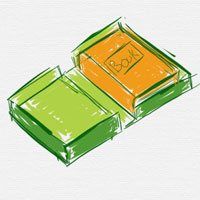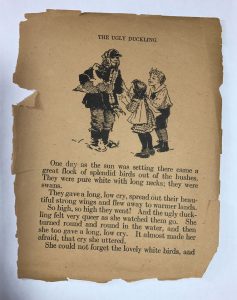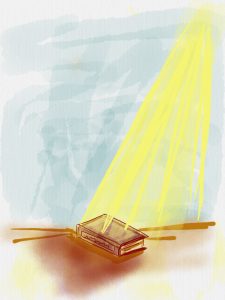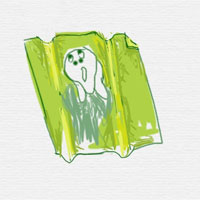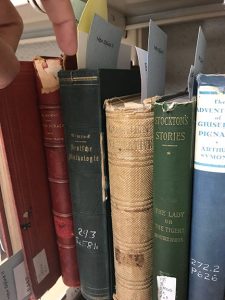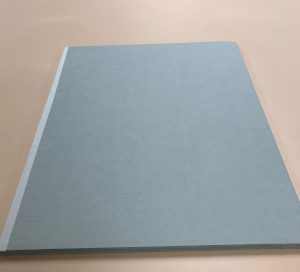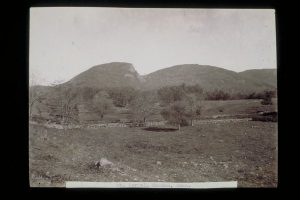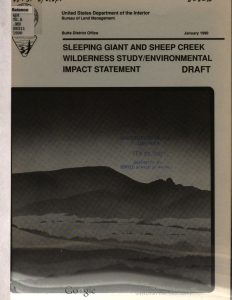In honor of Preservation Week, our Special Collections Conservator, Natalie Granados is sharing some of the work she does to ensure that all of our collections are getting the care and maintenance they deserve.
Humidity: What Is Damaging Your Collections?
Written by Natalie Granados (@natartlie). Special Collections Conservator – Uconn Library.
How temperature and humidity work together to affect your paper-based objects is a topic that has been discussed and devoured by conservators since the 80s. Join me in this series covering common damages to paper and books such as handling, temperature, humidity, pests and pollution.
 RELATIVE HUMIDITY
RELATIVE HUMIDITY
“How is humidity measured?” you may wonder. This is where the term Relative Humidity (RH) comes into play. RH refers to the amount of water vapor in the air, expressed as a percentage of the maximum amount the air could hold at the same temperature. When warm air is cooled, the RH goes up. When cold air is heated, the RH lowers.
Cellulose, as the raw material of paper, is hygroscopic. This means it responds to changes in relative humidity by expanding when humidity levels are high and contracting when they are low. Paper has an attraction to water since it contains water on its surface and within its chemical structure. Surface water is eliminated first when RH is low. Once this supply is exhausted, structural water is given up.
This action caused by low RH results in shrinkage, cracking and desiccation of paper and adhesives and flaking of photographic emulsions. Desiccated paper is more easily torn when handled. It must be noted, that structural water, unlike the surface kind, cannot be regained. Other damages caused by low RH include stiffening and flaking of adhesives and emulsions on photographs.

High humidity on the other hand, can lead to insect activity, delamination, bleeding of watercolors,distortions, adhesions of coated paper, ink transfer and mold growth. Mold stains and weakens paper and leather.
Similarly, to temperature, fluctuations in RH can also lead to damage. However, the damage occurs when various parts of an object respond at different rates. Composite objects such as books, photographs and paper adhered to stretchers, cloth or board, as well as material with partial constraints like repairs and mounts, among other objects are easy targets for fluctuating RH damage.
The Canadian Conservation Institute’s (CCI) Damage Caused by Incorrect Temperature and RH guide notes that the swelling and contraction of paper in response to humidity does not cause damage in and of itself. As previously mentioned, it is the fluctuation in addition to the presence of a secondary or tertiary incompatible material that leads to trouble.
SO, WHAT’S MY RELATIVE HUMIDITY GOAL?
The 2011 Specification for Environmental Condition for Cultural Collection released by the British Standards Institute describes that below 25% RH, the risk of physical damage increases rapidly and at 75% RH and above, the dimensional change due to each 5% rise in RH increases exponentially.
Now that that’s out of the way…
The recommended RH lies between 45-65% With an allowed fluctuation of ±5%. The safe RH boundary usually cited to prevent mold growth is below 65%, although 70% has also been cited. Photographic materials require an RH between 30% and 40%.
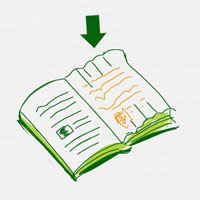 HOW TO PROTECT YOUR BOOKS AND PAPERS FROM HUMIDITY
HOW TO PROTECT YOUR BOOKS AND PAPERS FROM HUMIDITY
Similarly to protect from extreme temperatures, storing your objects in an archival box, folder or envelope will provide a barrier from humidity fluctuations. If box making or purchasing archival boxes are not feasible, consider interleaving book pages with acid free tissue to slow down acid degradation which is what causes paper to be fragile, yellow and crack easily.
Should I be freaking out about the fluctuations in RH in my stacks?
The short answer is no.
Although the goal is to keep a steady RH between 45-65%, fluctuations are inevitable due to the change of seasons or a lack of means to invest in a sophisticated HVAC system.
In Stefan Michalski’s Agent of Deterioration: Incorrect Relative Humidity “proofed” fluctuation is discussed. This is the largest fluctuation that the object has ever witnessed. The “proof” is in the pudding. What this means, is that any fluctuation smaller than the proofed will cause less damage than what has been caused in the past (if any at all). The good news is that even minor changes in spaces where fluctuations have occurred, will reduce the risk of damage to your collection.
Resources:
British Standards Institute (BSI). 2011. PAS 198:2011. Specification for environmental conditions for cultural collections.
Fahey, M.2002. The Care and Preservation of Documents and Works of Art on Paper. Michigan: The Henry Ford.
Fahey, M.2016. The Care and Preservation of Archival Materials. Michigan: The Henry Ford.
Grattan, D., and Michalski, S. 2015. Environmental Guidelines for Museums. Ontario:Canadian Conservation Institute (CC).
Library of Congress. The Deterioration and Preservation of Paper: Some Essential Facts.
Michalski, S. 2016. Agent of Deterioration: Incorrect Relative Humidity. Ontario: Canadian Conservation Institute (CC).
Michalski, S. 2016. Agent of Deterioration: Incorrect Temperature. Ontario: Canadian Conservation Institute (CC)
National Information Standards Organization (NISO).1995. NISO TR01-1995. Environmental Guidelines for the Storage of Paper Records.
National Parks Service (NPS). 2003. Part I: Museum Collections. Appendix J: Curatorial Care of Paper Objects.
National Parks Service (NPS). 2016. Part I: Museum Collections. Ch. 4: Museum Collections Environment.
Northeast Document Conservation Center (NEDCC). The Environment. 2.1 Temperature, Relative Humidity, Light, and Air Quality: Basic Guidelines for Preservation.

